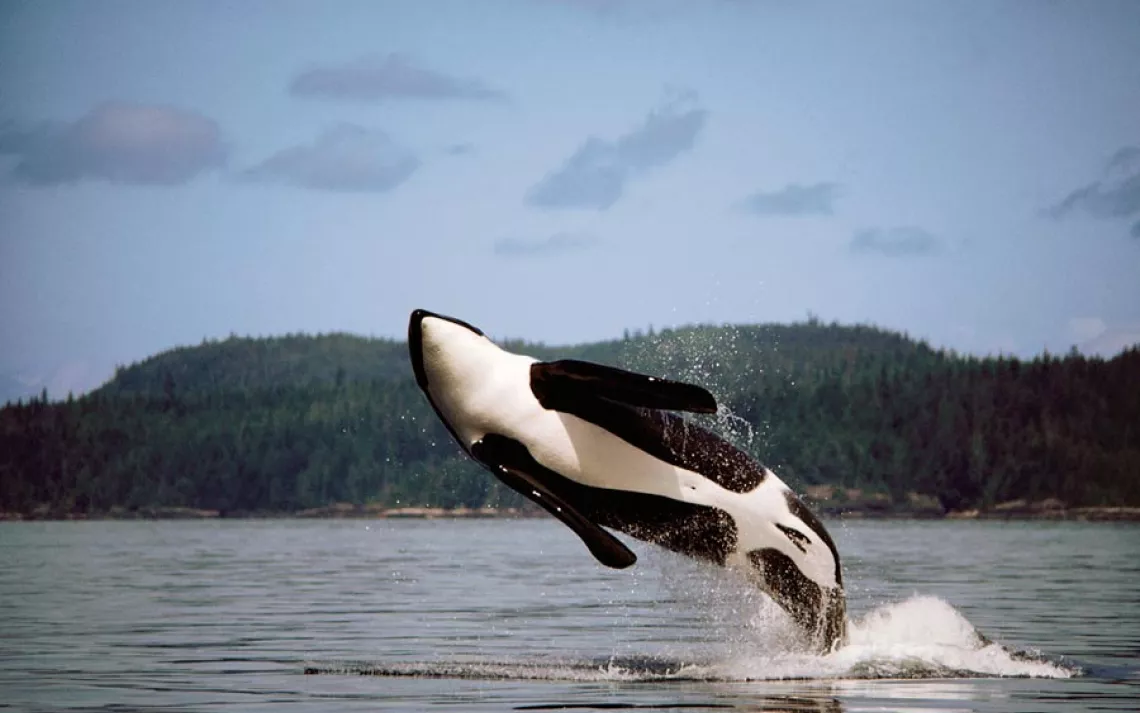Whales: The Sea's Mysterious Giants
Photography by Flip Nicklin/Minden Pictures, from Among Giants

We have a complicated relationship with whales. For centuries, we hunted them, ate their meat, lit our homes with their blubber, built corsets with their baleen, and carved scrimshaw into their teeth. Yet for all the time humans have spent chasing after cetaceans, we still know very little about the behavior and biology of these giant underwater mammals. A small community of researchers is working to fill this gap.
Among them, photographer Charles "Flip" Nicklin is probably the best-known chronicler of the lives of whales. Nicklin's new book, Among Giants: A Life With Whales (University of Chicago Press, June 2011) documents more than three decades of whale-watching. This slideshow features some of Sierra's favorite shots.

Sperm whales have the lowest reproductive rate of all mammals—they're able to give birth to a single calf every four to six years at their reproductive peak—and the largest brain of any living creature on the planet. These highly social animals often raise their young communally.

This humpback's body is a mobile smorgasbord for schools of smaller fish, which feed on the whales' dead skin. Humpbacks survive on their stored blubber during winter months, which most spend in Hawaii, flirting, mating, and giving birth.

A dwarf minke whale in the great barrier reef, Australia. The minke got its name from Norwegian whaler Captain Meincke, who earned a reputation for exaggeration by confusing the diminutive cetacean with the much larger blue whale. Today, minkes are the most commonly hunted whales.

An orca breaches in Johnstone Strait, British Columbia, Canada. No one knows why whales leap into the air. Breaching could serve a social function, or the force of their huge bodies smacking against the water's surface might help whales dislodge parasites, barnacles, and dead skin.

Gray whales feed by swimming on their sides along the ocean floor and filtering sediment through the baleen in their mouths to capture crustaceans and other small animals. The whales' "feeding pits" dimple the bottom of the shallow coastal waters of the northern Pacific. Offshore drilling operations could pose a mounting threat to the whales.

A humpback whale meets a hydrophone, in Maui, Hawaii. While both sexes make some noises, only male humpbacks sing. Researchers have discovered that the whales' songs evolve and change, much like human language transforms over time.
By Della Watson
Della Watson is Sierra's web editor.
More articles by this author The Magazine of The Sierra Club
The Magazine of The Sierra Club


